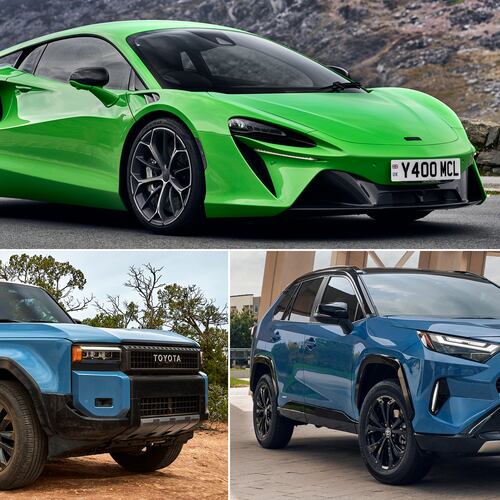In December 2017, Americans could choose from 36 new cars priced under $25,000. Five years later automakers built just 10.
That’s according to Kelley Blue Book. At the start of that period, cars priced under $25,000 made up 13% of new vehicle sales. By the end, they accounted for less than 4%.
We’re still compiling data on the upcoming 2025 model year. We expect to find eleven new vehicles priced under $25,000. Industry scuttlebutt suggests a few of those cars might not see 2026.
The situation is starker when you look at cars under the $20,000 line.
Automakers split the price of a car into two numbers: the manufacturer’s suggested retail price (MSRP) and the delivery fee. The latter sounds optional but is mandatory. You pay the delivery fee even if you pick up your car at the factory door. So, we combine the numbers in our pricing. For this comparison, we’re using the price of a bare-bones base model of each vehicle plus its delivery fee.
In 2017, Americans had a choice of seven subcompact cars and SUVs priced under $20,000. None were amazing, but all got you where you needed to go and protected you from shock expenses with a warranty.
Credit: SPECIAL
Credit: SPECIAL
Then Chevrolet canceled the Spark. Hyundai axed the Accent. Kia retired the Rio. Recently, Mitsubishi announced the end of Mirage production.
The Hyundai Venue and Kia Soul remain in production, but inflation has pushed their prices above the $20,000 line.
The Nissan Versa is the last sub-$20,000 car standing. An industry report says the company may cancel it after 2025.
What happened to the cheap car? To understand, we must look at the other end of the price scale.
The supply of $60,000-plus cars exploded
Between 2017 and 2023, the number of new vehicles for sale priced over $60,000 grew dramatically.
In December 2017, automakers sold 61 models priced over $60,000. These cars made up less than 8% of new car sales. Five years later, the manufacturers offered 90, making up more than 25% of all sales.
We’re still accepting invitations to carmaker reveal events for 2025 vehicles, but we already know the number will be higher.
Inflation and interest rates contributed
Inflation has been worldwide news since early in the COVID-19 pandemic. Supply chain crises impacted the auto industry as much as they did any other segment of the economy.
However, there’s a crucial difference between cars and products Americans buy more frequently: Chickens can’t decide to make more luxury eggs, but that’s precisely what car builders did.
They saw an economy in which inflation and high interest rates meant only higher-income, better-credit Americans could easily afford car shopping. So, they tailored their lineups for those buyers.
Nowhere is this more obvious than at Jeep. The brand is famous with off-roaders and is known for rugged, stripped-down models. Jeep has a do-it-yourself ethos and loyalists who shun luxury. Jeep just eliminated the manual hand-crank window on its Wrangler SUV for the 2025 model year.
Beyond the Wrangler, even Jeep chose to reach for the luxury market. A top-of-the-line 2024 Grand Wagoneer Series III Obsidian costs nearly $120,000.
Electric cars contribute to rising prices
Electric vehicles (EVs) have also helped push prices up.
Tesla pioneered the modern EV market with a particular business model: build high-end cars first. Once sales of those cars paid for the research and development required to create them, the company moved down-market with more mainstream vehicles.
Startups like Lucid and Rivian are following in Tesla’s footsteps, building pricey models first and promising more affordable ones later. Even long-established companies are using a version of the model. General Motors built the supremely capable GMC Hummer EV with a price tag pushing six figures long before introducing the $45,295 Equinox electric car.
There’s short-term hope
Now, some good news. We see growing evidence that automakers are turning the trend around.
Dealers tell us they have spent much of 2024 begging automakers to send them models they can profitably sell for less.
It’s starting to work. General Motors redesigned its Chevrolet Trax subcompact SUV for the 2024 model year, and the glow-up was shocking. It went from one of the least attractive cars on the market to something sleek and sporty looking. The Trax uses a 137-horsepower 3-cylinder engine (on the low end of power for its size), but the attractive price has to come from somewhere.
Also, GM introduced the Buick Envista, priced under $25,000 and even better looking than the Trax. More recently, Nissan gave its Kicks subcompact SUV a complete redesign for 2025, taking it from dowdy to fashionable but keeping the price to just $23,220.
Automakers seem to have realized there’s a market for attractive, inexpensive cars.
There’s long-term hope
Hope for lower prices also comes from the same EV transition that helped push prices higher.
The Tesla business model starts with high-priced cars but decreases sticker prices over time.
Economies of scale will make building electric cars less expensive the more EVs automakers build. EV designs are mainly modular. Once an automaker has a working EV platform, scaling it down to create more affordable models is less expensive than designing gas-powered subcompact cars from scratch.
It will take decades for most Americans to transition to electric cars. However, the more luxury EVs you see on the road around you, the closer cheap EVs get to being mainstream.
Sean Tucker reports for Kelley Blue Book from Washington, D.C., where he has covered the auto and energy industries for a quarter-century.
The Steering Column is a weekly consumer auto column from Cox Automotive. Cox Automotive and The Atlanta Journal-Constitution are owned by parent company, Atlanta-based Cox Enterprises, which also owns about a 3% stake in Rivian.
About the Author
Keep Reading
The Latest
Featured




